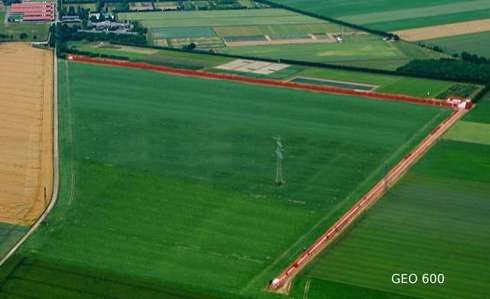E-Book on gravitational wave detection
These pages provide short and easy to understand
introductions to a number of topics related to
gravitational waves and the instruments used to detect
them.
This GW E-Book is available in the
following languages:
English,
Español,
Català,
简体中文,
Deutsch and
Italiano.
Ground-based gravitational wave detectors, like GEO 600 shown above, are large L-shaped laser interferometers that can measure tiny distortions of space (space-time) itself. The L-shape is formed by a large vacuum system, in which optical elements and laser beams are protected from the normally rather noisy environment. The powerful and very, very stable laser beams travel back and forth in the arms of the L shape and are then detected by a photo detector. Even the tiniest change in the length of one of the arms will be visible as a change in the signal of the photo detector.
Gravitational waves are ripples in space time that are created by cosmic events such as collisions of stars. These ripples travel through the universe at the speed of light. When they pass the Earth they can be measured as small changes in distances. Thus the L-shaped interferometers are the perfect instrument to look for them.
The key to successfully building a gravitational wave detector is to use very stable and high-quality parts such that no unwanted changes in the measured length occur. This requires sophisticated systems of various kinds to be joined together, such as a ultra-high vacuum system, mechanical suspensions, high-power lasers and specially designed mirrors. The sections of this e-book provide brief introductions in all these systems.
This collection of texts has been written by the members of the Gravitational Wave Group in Birmingham as the `ebook' complement to our computer game Space Time Quest.


